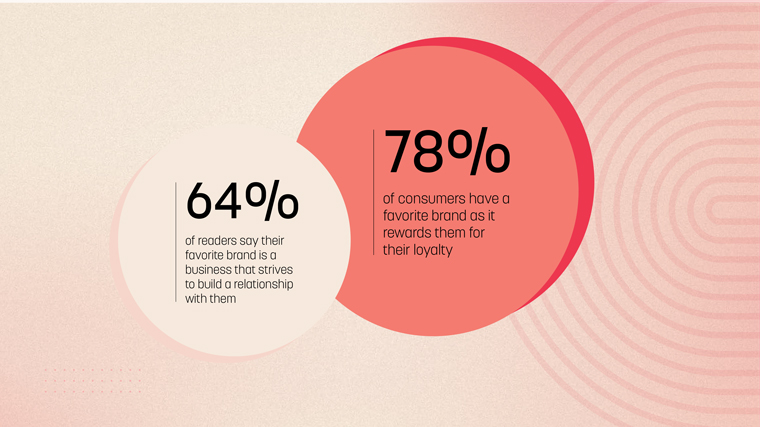It’s very easy for publishers to lose sight of the fact that the readers who consume the content they produce are, in fact, individuals.
As much as publishers want to profile their readers and establish common themes or pain points that resonate with their collective tastes and interests, it’s important never to lose sight of the fact that each reader is his or her own individual.
Publishers can’t allow themselves to lose sight of those facts while collecting audience data in an effort to stimulate audience-growth strategies. Everyone wants to feel like they’re valued and that a publisher offers a user experience that’s unique to their specific preferences.

A reader who feels valued and appreciated through personalised content recommendations is far more likely to become brand loyal, which is the pathway to earning subscription revenue from loyal readers.
Majority of readers reward brands earning their loyalty
Here are some helpful facts to paint a clearer picture: According to the 2022 Digital Consumer Trends Index, as many as 78% of consumers admit to having a favourite brand because that brand rewards them for their loyalty. This could be expressed in the form of discounted subscription rates or a free month of access to premium content.
Additionally, 74% of those same consumers prefer brands that treat them as individuals. It further validates the point that every person has unique tastes and preferences. When a reader visits a Web site to engage with new content, they want to believe the content was created specifically for them. They want to feel as if the entire user experience is built to appeal to their unique interests.
Readers provide plenty of incentive for publishers to earn their loyalty. More than 70% of readers say their favourite brand is a business striving to build a relationship with them. Another 64% say their favourite brand rewards their loyalty with surprise benefits, and 58% cite their favourite brand as the one that treats them like a VIP.
Everyone wants to feel like they’re special. Publishers that know how to create those feelings among their readers earn that invaluable brand loyalty.
First-party data shines a light on how to personalise content
Here’s the truth: 90% of readers respond positively to personalised experiences. As publishers, it’s essential to speak to individual readers using messaging that appeals to their interests. It’s through this approach that publishers show the humanity behind their brand identities, effectively communicating as one individual to another.
That personalised engagement and the ability to boost reader loyalty is created through first-party data. First-party data enables publishers to learn specific details about individual buyers and monitor any change in those behaviours over time. Publishers use these insights to build rich audience profiles that develop behavioural patterns of their most avid readers.
A data-driven content strategy prioritises personalisation
Using these audience profiles, content creators produce highly personalised content across the entire Web site. Audience segmentation is one of the building blocks of a content strategy that’s informed by behavioural data.
Once you begin segmenting your readers, you can go a step further and analyse where in the subscription journey different types of readers happen to fall. Segment readers as new visitors, known readers, and subscribed loyalists to uncover richer details of how people respond to your content.
Using an audience insights solution, all of this data can be pulled into a dashboard that your creative team can review at their convenience. Creators can review the journeys taken by current subscribers to understand what types of content converted them into brand loyal readers.
With those insights in hand, a data-driven content strategy can flourish and ultimately guide more readers to cross that threshold into the realm of becoming loyal subscribers.
Profile readers, build loyalty, boost subscriptions
Rich audience profiles tell creators how individual readers will respond to freshly created content. Using those insights, your creative team can double down on creating the types of stories that foster greater reader engagement. By relying on first-party data to direct the content strategy, you successfully create those personalised experiences that foster reader loyalty.
As data-driven content strategies develop over time, it’s important to never lose sight of the fact that the audiences you depend on for first-party data, helpful insights, and subscription revenue are all made up of individuals.
Individual readers have their own tastes and preferences, but it’s incumbent on publishers to learn about those interests so readers are incentivised to provide more first-party data or, as they become fully brand loyal, subscription revenue.
This blog was originally published by INMA


